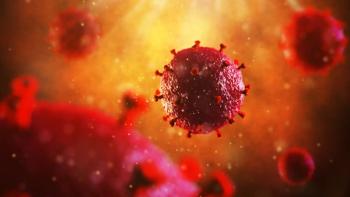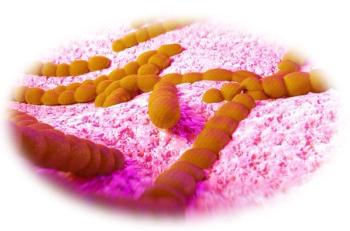
Intussusception and Acute Abdominal Pain in a Toddler
This condition involves the invagination of a proximalsegment of bowel (the intussusceptum) into a more distalsegment (the intussuscipiens) (A). It occurs mostfrequently in infants between the ages of 5 and 12months and is a leading cause of intestinal obstructionin children aged 2 months to 5 years. Intrauterine intussusceptionis associated with the development of intestinalatresia. The male to female ratio is approximately3:2. Intussusception is slightly more common in whitethan in black children and is often seen in childrenwith cystic fibrosis.
This condition involves the invagination of a proximalsegment of bowel (the intussusceptum) into a more distalsegment (the intussuscipiens) (A). It occurs mostfrequently in infants between the ages of 5 and 12months and is a leading cause of intestinal obstructionin children aged 2 months to 5 years. Intrauterine intussusceptionis associated with the development of intestinalatresia. The male to female ratio is approximately3:2. Intussusception is slightly more common in whitethan in black children and is often seen in childrenwith cystic fibrosis.In most patients with intussusception, the cause isunknown, although some experts believe that hypertrophyof Peyer patches from an antecedent viral infectionmay be responsible. Recognizable pathologic lead pointsfor intussusception are found in about 2% to 10% of patients.The most common is a Meckel diverticulum, followedby intestinal polyp, duplication, appendix, ectopicpancreas, enterogenous cyst, hemangioma, intramuralhematoma, foreign body, and neoplastic lesion. Inspissatedsecretions and thick fecal matter in the bowel lumenmay act as a lead point.More than 80% of cases of intussusception are ileocolic.The ileoileal, jejunoileal, cecocolic, colocolic, and jejunojejunalvarieties occur less frequently.Typical presenting features include colicky abdominalpain, irritability, lethargy, vomiting, and passage of"currant-jelly" stool. The characteristic stool suggests thatvenous congestion--with ischemia in the affected area ofthe bowel--has already occurred.Children with intussusception sometimes also havefever and diarrhea, which may create diagnostic confusionand delay. The pathognomonic sign is an elongated massin the right upper quadrant or epigastrium with a feelingof emptiness in the right lower quadrant (Dance sign). Ifthe intussusception has traveled far enough, its apex maybe felt, especially on bimanual rectal examination.Plain abdominal radiographs may show dilated loopsof intestine, air-fluid levels, paucity of air in the right lowerquadrant, minimal fecal content, and a soft tissue mass inthe right or mid abdomen. Abdominal ultrasonography isa sensitive noninvasive diagnostic tool and is very reliablein experienced hands. The diagnostic findings include atubular mass ("sandwich" or "pseudokidney" sign) in longitudinalviews and a target appearance ("doughnut" sign)in transverse views.If doubt remains, the diagnosis can be confirmed byradiography with barium or air insufflation; both proceduresare diagnostic as well as therapeutic. A barium enemashows a filling defect or cupping in the head of barium,where its advance is obstructed by the intussusceptum(B). An air enema (C), however, is the procedure ofchoice: it is safer, less expensive, and easier to performthan a barium enema and involves less radiation exposure.The reduction rate with an air enema is approximately80%; the bowel perforation rate ranges from 0.1% to0.2%. For barium enema, the reduction rate is 75% to 85%;the bowel perforation rate is 0.5% to 2.5%. Air pressuremust be monitored during air reduction; the maximum is110 mm Hg in children and 80 mm Hg in infants. Bothtypes of reduction should be attempted only under controlledconditions. Evidence of peritonitis, intestinal perforation,shock, advancing sepsis, and possible gangrenousbowel precludes pneumatic or hydrostatic reduction.Unsuccessful pneumatic or hydrostatic reduction,shock, peritonitis, intestinal perforation, and demonstrationof a pathologic lead point are indications for laparotomy.Preoperative measures include nasogastric decompressionand administration of intravenous fluids and broad-spectrumantibiotics. Reduction can usually be accomplishedby gentle distal pressure, which milks the intestine out ofthe intussuscipiens. Pulling out the intussusceptum shouldnever be attempted. An appendectomy is performed afterreduction, because the blood supply to the appendix isoften compromised. Bowel resection is indicated if thebowel is nonviable, a pathologic lead point is found, or thereduction is unsuccessful. A primary end-to-end anastomosiscan usually be performed after the resection.The likelihood of recovery is directly related to the durationof intussusception before reduction; most infants recoverif reduction occurs within the first 24 hours. The recurrencerate of intussusception is between 8% and 12%after an air or barium reduction and about 2% to 5% aftersurgical reduction. There are no recurrences after surgicalresection. Infants with untreated intussusception usually dieof hypovolemia and the associated intestinal obstruction.
Newsletter
Enhance your clinical practice with the Patient Care newsletter, offering the latest evidence-based guidelines, diagnostic insights, and treatment strategies for primary care physicians.




























































































































































































































































































